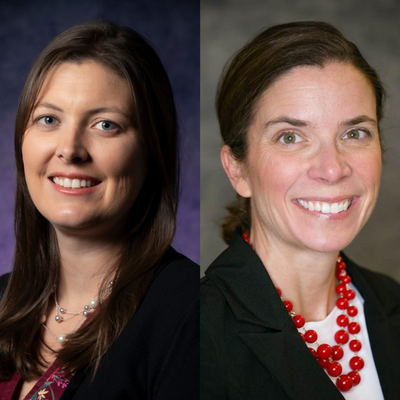Candice Vander Weerdt, Ph.D | Cleveland State University
Candice Vander Weerdt, Ph.D | Cleveland State University
New Study: Offering Paid Sick Leave Good for U.S. Business; 20+ Years of Research Systematically Reviewed by CSU Researchers, FAU partner

CLEVELAND (Feb. 28, 2023) – A new study published in the American Journal of Industrial Medicine by Cleveland State University (CSU) and Florida Atlantic University (FAU) researchers found compelling evidence of significant benefits of paid sick leave to organizations.
The researchers systematically reviewed 22 years of research examining the relationship between paid sick leave benefits and short-term and long-term U.S. business outcomes.
They took into consideration factors such as business size, industry, and whether paid sick leave was required due to a legislative mandate. For the study, researchers reviewed the relationship between paid sick leave and correlates of job satisfaction, morale, job commitment, turnover, retention, employee health and safety, occupational injury, presenteeism, absence from work, labor market effects, profitability, productivity and performance.
“Considering the weight that has been given over time to the potential harm of paid sick leave to business, we were surprised to find so little evidence to support this concern,” said Candice Vander Weerdt, Ph.D., lead author of the study and a faculty member in the Monte Ahuja College of Business at CSU (left).
“Aside from small increases in worker absence, what we found was actually the opposite, a trove of evidence suggesting paid sick leave is linked with favorable business outcomes,” Dr. Vander Weerdt added.
Except for a temporary federal law providing paid sick leave to certain employees between March and December 2020, the United States remains one of the few developed countries without federal paid sick leave protection for workers.
In recent years, 14 states have enacted paid sick leave mandates while 18 states passed preemptive legislation prohibiting paid sick leave laws — largely due to concerns about potential negative impacts this may have on business.
“Our study is particularly timely given the health concerns, mass resignations, and labor shortages observed during the COVID-19 pandemic, which have compromised access to healthy, reliable, and enduring human resources,” said Patricia Stoddard-Dare, Ph.D., co-author and a professor in the School of Social Work at CSU’s College of Health (right).
Key findings from the study show access to paid sick leave means less occupational injury, spread of contagious disease, “presenteeism,” and employee death. There was more evidence that paid sick leave was related to favorable business conditions such as employee morale and job satisfaction, improved retention, higher profitability and firm performance, and favorable labor market conditions, compared to evidence supporting negative business consequences, such as worker absence.
Absence from work was the most commonly reported unfavorable outcome of paid sick leave for business; yet findings from the study illuminated the value of having employees stay home when sick.
Notably, most of studies that identified a small but significant increase in work absence associated with paid sick leave also reported a decrease in presenteeism —that is, lost productivity when employees are not fully effective in their workplace due to illness, injury, or other conditions — which has been estimated to cost U.S. companies billions of dollars a year in lost productivity and may impact occupational injuries and spread of disease.
“Coming to work sick, injured or ill can diminish productivity and performance and may lead to the spread of illness to other employees,” said LeaAnne DeRigne, Ph.D., MSW and professor of FAU’s Sandler School of Social Work. “In any given week, about 2 percent of workers attend work while sick, particularly women, low wage workers, and those ages 25 to 34.”
The researchers say strong legislative activity for and against paid sick leave has peppered the last decade.
“Although increased absence from work is a serious concern for policy makers in the debate of paid sick leave, our study showed absences from work, while disruptive to business, also may limit the spread of contagious disease in the workplace and thereby lessen presenteeism, reduce occupational injury, and promote a quicker return to optimal employee functioning,” said Dr. Stoddard-Dare.
Considering benefits available to organizations offering paid sick leave—improved job satisfaction, employment retention, better employee health and safety, improved labor market performance— Drs. Vander Weerdt, Stoddard-Dare and DeRigne note costs related to increased absence may be largely mitigated.
“Paid sick leave laws have greatly increased access to paid sick leave. While paid sick leave is accessible to 92 percent of Americans earning in the top quartile, only 51 percent of those earning in the lowest quartile have access,” said Dr. Vander Weerdt. “These workers are often engaged in food service, hospitality, or retail work, meaning they are often on the front lines of our community.”
Researchers found evidence suggesting paid sick leave was associated with lower spread of disease, not only for the workers themselves, but for the entire region where paid sick leave mandates were passed. Findings of this study provide a foundation for understanding the business perspective in relation to paid sick leave.
“We hope our study findings will help to inform a wide variety of stakeholders and assist them to better prepare for both routine and unexpected health interruptions while safeguarding business well-being,” said Dr. Stoddard-Dare.
For the study, researchers utilized the Preferred Reporting Items for Systematic Reviews and Meta-analyses (PRISMA) guidelines to systematically review six research databases between 2000 and November 2022.
About Cleveland State University:
Founded in 1964, Cleveland State University is a public research institution that provides a dynamic setting for Engaged learning. With nearly 16,000 students, eight colleges and more than 175 academic programs, CSU was again chosen for 2022 as one of America’s best universities by U.S. News & World Report, including the #1 university in Ohio for social mobility. Find more information at www.csuohio.edu.
Original source can be found here.

 Alerts Sign-up
Alerts Sign-up